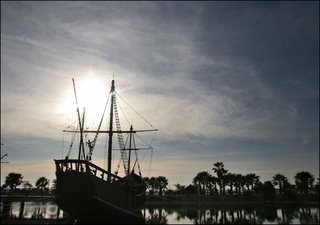Just the Artifacts
The Palisades area, with its proximity to the Potomac and the various creeks that fed into it, was more than just a pleasant spot for ancient Washingtonians; it was critical to their survival. The anadromous fish migrations?shad and striped bass running back to spawn in their native streams?that drive modern-day sportsmen onto the river each spring coincides with what was the ancient Indians? leanest time of year.

Just when they had depleted their winter stores and before the berries appeared or cultivated crops could be harvested, they received tens of thousands of pounds of protein in the form of schools of fish so thick that 17th-century explorer John Smith tried to catch them with frying pans. If anything, Dupin?s findings verify the impression archaeologists have about the area?s density of materials. ?The mantra of today?s real-estate agent also holds in prehistory: location, location, location,? says Stephen Potter, the regional archaeologist for the National Park Service (NPS). ?Prime real estate is and always will be on the waterfront.?
